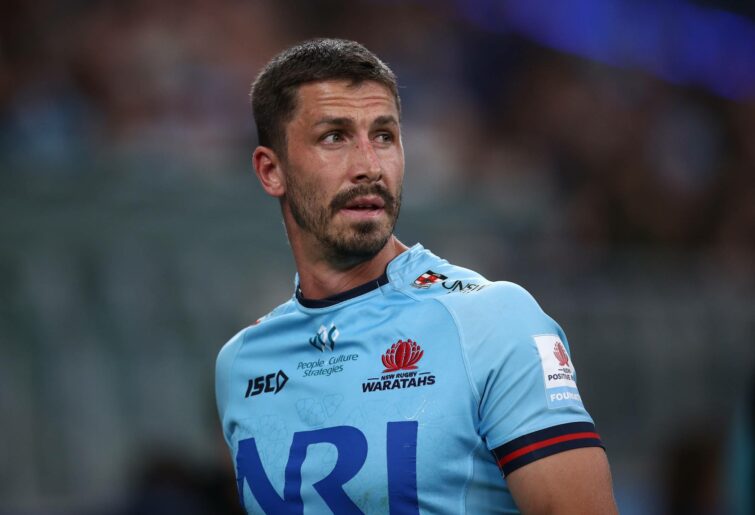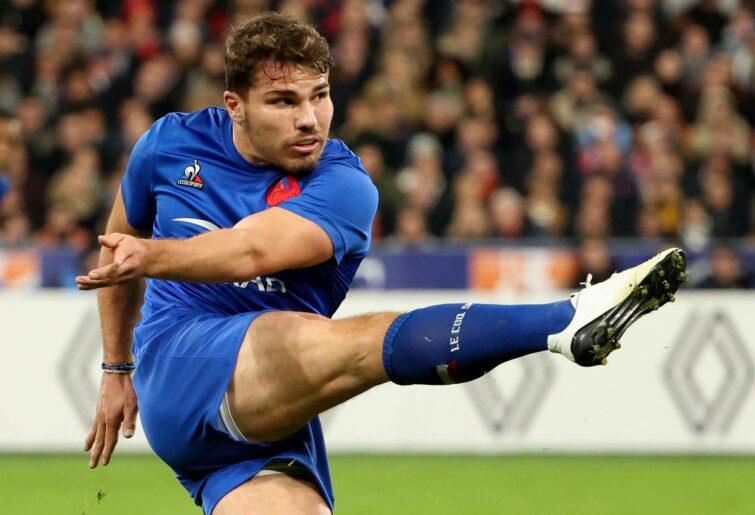In 2011 New Zealand became the first team to win the World Rugby Under 20 Championship (also known as the Junior World Cup) and the Rugby World Cup.
It had capped off a four-year clean sweep of wins for the under 20s and establish New Zealand as the undisputed top dog of rugby pathways.
But today France seems to have taken this crown and it will be some effort to get it back.
In this article I want to go through how many under 20s are getting professional game time in the four leading leagues of Super Rugby Pacific, Premiership, United Rugby Championship (URC) and Top 14. How many under 20s are coming through, where on the field they are playing and why the beast that is French rugby is going to be hard to behead.
How big is the French beast?
Before we get into the numbers we need to look at how big the beast really is. We are all familiar with the Top 14, but what lies underneath it? The Pro D2, recent home of John Afoa, Elton Jantjies and Andrew Ready has 16 teams and is fully professional.
Below them is France’s newest professional league Championnat Fédéral Nationale, which was created in 2020. There are 14 clubs which are overseen by the French Union. It is in this league that the clubs prove their financial stability as a professional club. This is 44 clubs in total.
To put it into Australian terms, if you professionalised the Shute Shield and Hospital Cup you would still have fewer clubs than the French have. If the NPC and Heartland were professionalised it would also be smaller. There is no country close to them, especially after England’s recent troubles with professionalism.
We can break down the number more by looking at regions in France. Nouvelle-Aquitaine (6 million), Occitanie (6 million) and Auvergne-Rhône-Alpes (8 million) are the three areas that power French rugby. In the three divisions, Nouvelle-Aquitaine has 12 (5+4+3), Occitanie 12 (4+4+4), Auvergne-Rhône-Alpes 9 (2+3+4). The rest of France have 11 (3+5+3) with the Union focusing on building up the other regions now that those three regions are developed.
I know France isn’t New Zealand or Australia, and Super Rugby can’t be the Top 14, but the Top 14 is much more like AFL and NRL. All three competitions are built around their power base of Melbourne (AFL), Sydney (NRL) and the south of France (Top 14). Because Super Rugby is not built around New South Wales (7 million), Queensland (4.5 million) and Auckland/Waikato area (1.8 million) a lot of the strength is lost.

(Photo by Jason McCawley/Getty Images)
With academies and schools becoming more important at producing professional players than amateur clubs, five academies in any of those three regions will provide more players to fill teams like the Highlanders and Rebels than their own academies are producing. This is why Occitanie, with fewer rugby fans and players than New Zealand, are able to produce so many players.
Casting a wide net – Antoine Dupont
At the height of Super Rugby players from the feeder pathways of NPC, Currie Cup and Australian clubs collected the best young players and prepared them to be Super Rugby ready. Shute Shield and Hospital Cup threw a wide net over the Australian heartlands to produce the winning teams of 1991 and 1999.
As they have been replaced by the Waratahs and Reds academies pathways, players must move or give up, and players in those competitions are not considered generally after a certain age. If Emmanuel Meafou had been playing for a Perth club he may have been picked up but in the hotbed of Sydney he was lost. In New Zealand if you want to be professional it’s a lot harder in certain areas due to supply and demand.
Antonie Dupont is the best example as to why the French system is now working. He is from Occitanie, where each of the cities with 40,000-plus people have a professional rugby team. New Zealand have 19 urban areas and New South Wales has seven urban areas with similar populations.
Dupont was with Auch (22,000) when they were in the Pro D2. After they were relegated he moved to Castres, making his debut for them at 17.
It was only when he was good enough did he get signed by Toulouse, who are the biggest city in Occitanie with nearly 500,000 people. If he had been born near Auckland or Sydney, would he have had the professional development to ultimately play for Toulouse and France?

PARIS, FRANCE – NOVEMBER 5: Antoine Dupont of France during the 2022 Autumn International test match between France and Australia at Stade de France on November 5, 2022 in Saint-Denis near Paris, France. (Photo by Jean Catuffe/Getty Images)
Because there are now 12 clubs in Occitanie looking for the next Dupont, each year the 12 best scrumhalves are being brought into professional setups.
Developing lower level players – Emilien Gailleton
Both Meafou and Uini Atonio have gone on to be considered Test standard. After just one year in France, Meafou would have been picked up by any Super Rugby side, while Atonio would at least have been an NPC player. Both were deemed not good enough before they moved to France. The only difference is they had been in a professional environment for one year.
La Rochelle developed Atonio as a Pro D2 player who became a Top 14 player when they were promoted to that division. Promoted teams keep a large chunk of their squad, with some weaker players being replaced by Top 14-standard players. Relegated teams do the opposite, where they keep most of their squad, losing their better players.
Pau have let Piperol (20) move to Montauban in the Pro D2 and Larre (18) move to Dax in the National. Both players will get more game time at a level better suited to them. Neither have played in the Top 14 or were likely to, so moves to lower clubs is better for everyone currently. These players will not be going semi-professional or amateur but will be fully professional.
Seventeen-year-old Brau-Boirie is heading the other way from Tarbes (National) to Pau.
Emilien Gailleton is a great example of this. At 18 he started off with Agen (30,000) in the Pro D2, racking up 1036 minutes across 15 games. He was then signed by Pau last summer playing in the Top 14. He finished top try-scorer in the Top 14 at 19 years of age.
There was no bedding in period or getting use to professionalism, as he had been a professional the previous year. He is now in the French training squad, having outgrown the u20s.
In New Zealand he would have had to shine in the club system before getting picked up in the NPC. Once in the NPC he would have had to then hope he got picked up by a Super Rugby team, or it would have been a year lost as he tried to repeat the process. It wasn’t until Round 7 that he played his first game for Agen in the Pro D2, but with 30 rounds he had plenty time to shine that year.
By having 16 professional teams below the top tier, the Top 14 clubs don’t need to get players in shape to play professional rugby. For a lot of players in Australia it’s hard to go from Shute Shield, competing against amateurs, to shining in training against hardened professionals.
NPC has the same issues but with the extra challenge that you must out perform existing professionals without the same strength and conditioning.
Playing numbers
These numbers will shock you as to how big they are. These do not include the Pro D2 or National which will be producing similar numbers of players, but at a lower quality. We can probably double the number to find the total number of under 20 who are playing professional rugby in France.
Top 14 v URC + Prem + SR
Clubs = 14 v 39
Front row = 11 v 1
Rest of Pack = 14 v 19
Backs = 26 v 28
Born in 2003 = 29 v 40
Born in 2004 = 22 v 8
First we need to worry that France are playing more under 20s than the other three leagues combined. These leagues provide the other big nations their future players, meaning France is becoming like New Zealand of the 2000s at underage where they can pick players that seem like men playing a boys game. If France are leaving more professional players at home for the under 20s than other countries are bringing, it’s not going to get better.
We see the big jump in players from 18 to 19 in the other leagues but in France it is a lot more even,with about 50 per cent more 19-years-olds playing in France compared to the rest of the leagues. This then has a knock-on effect for development.
Auradou, a lock for France who you can see in South Africa, has already got 660 minutes playing for Pau in the Top 14. There is unlikely to be any other lock that will come close to him at the under 20s in terms of experience. Next year he will be packing down next to Whitelock.
We see also why Georgia is so much better now than 10 years ago, as three of the 11 front rowers are Georgian. This is why they held up so well against England and South Africa. The other eight are all French but they can’t take them all to the under 20s. This does not include the front rowers at Toulouse who must get past two complete international front rows to start.
France also played more players in the pack than they did in the backs, while the rest of the leagues were 20:28. A system that can produce teenagers to a level that they can play in the most physical league in the world shows how far strength and conditioning has come in France. On the other hand other nations are only doing as well as they did 15 years ago.
Conclusion
If you know kids who want to be professional players tell them to learn French as they may need it one day. Any player under 23 who thinks they can make it as a professional player but hasn’t been picked up, should book a holiday to France and see if they can train with one of the 44 clubs. If they stay at home their chances are slim, if they go to France and are Shute Shield level they could probably get a National club to take a look.
This may sound like a European fan showing off how great it is, but the simple fact is my country is going to face the same challenges as all the countries in the world that are not France. They are taking kids from all over the world who they think will be the next Atonio or Meafou.
You are nearly three times more likely to play in France as a teenager than you are anywhere else. It may be why Miles Amatosero was 18 years, six months and two weeks making his Top 14 debut. I would be shocked if any professional lock from Australia has been younger. Auradou was 18 years, four months and three weeks but more on that in the next one.































































































